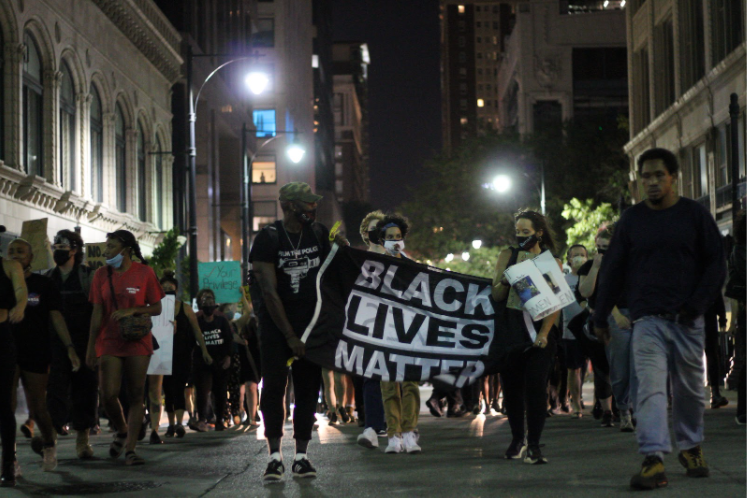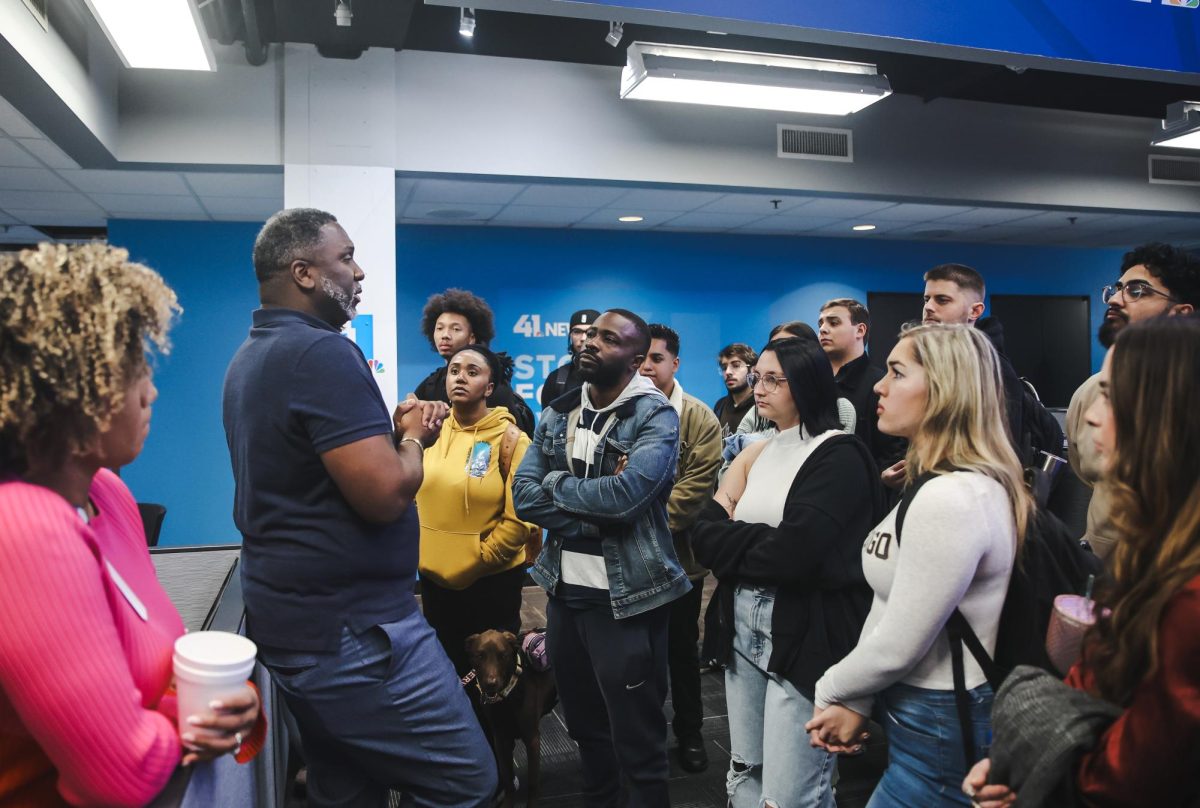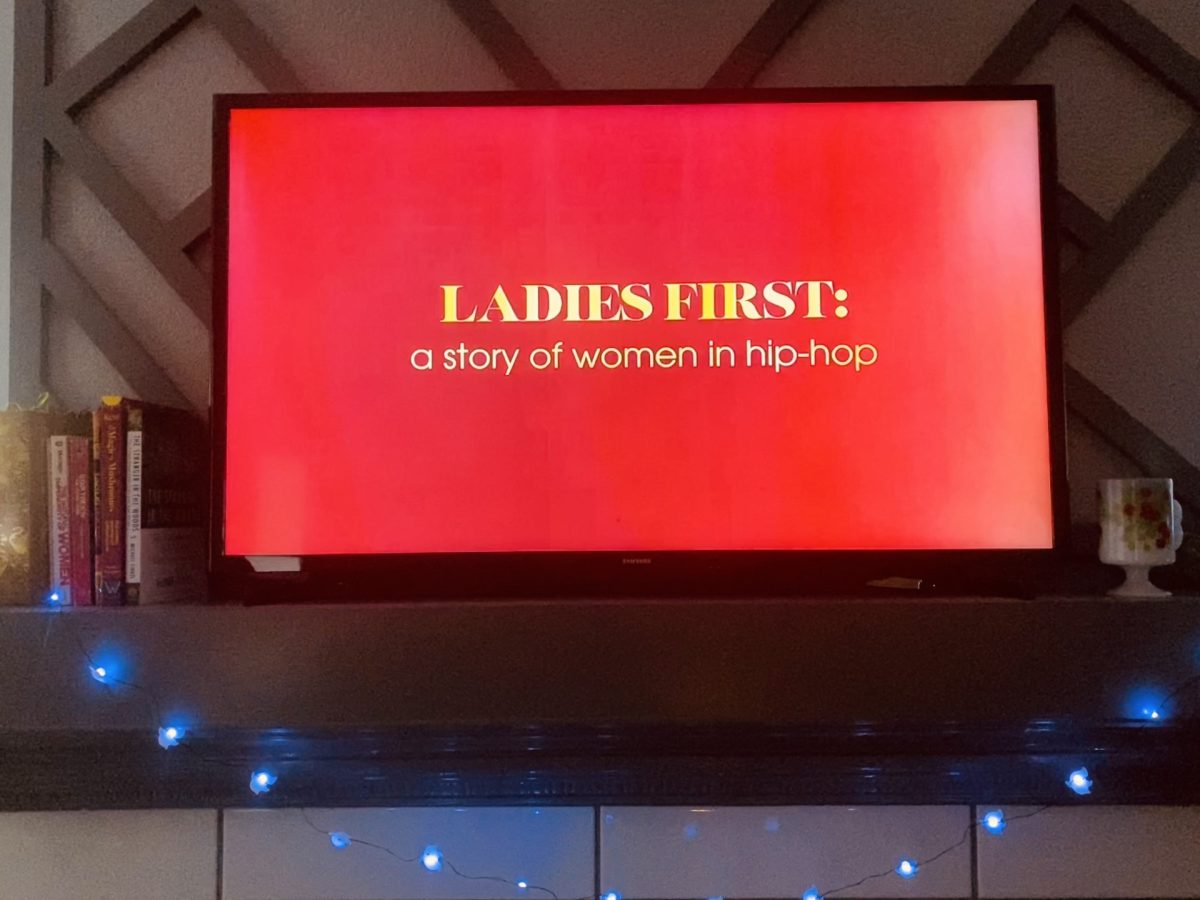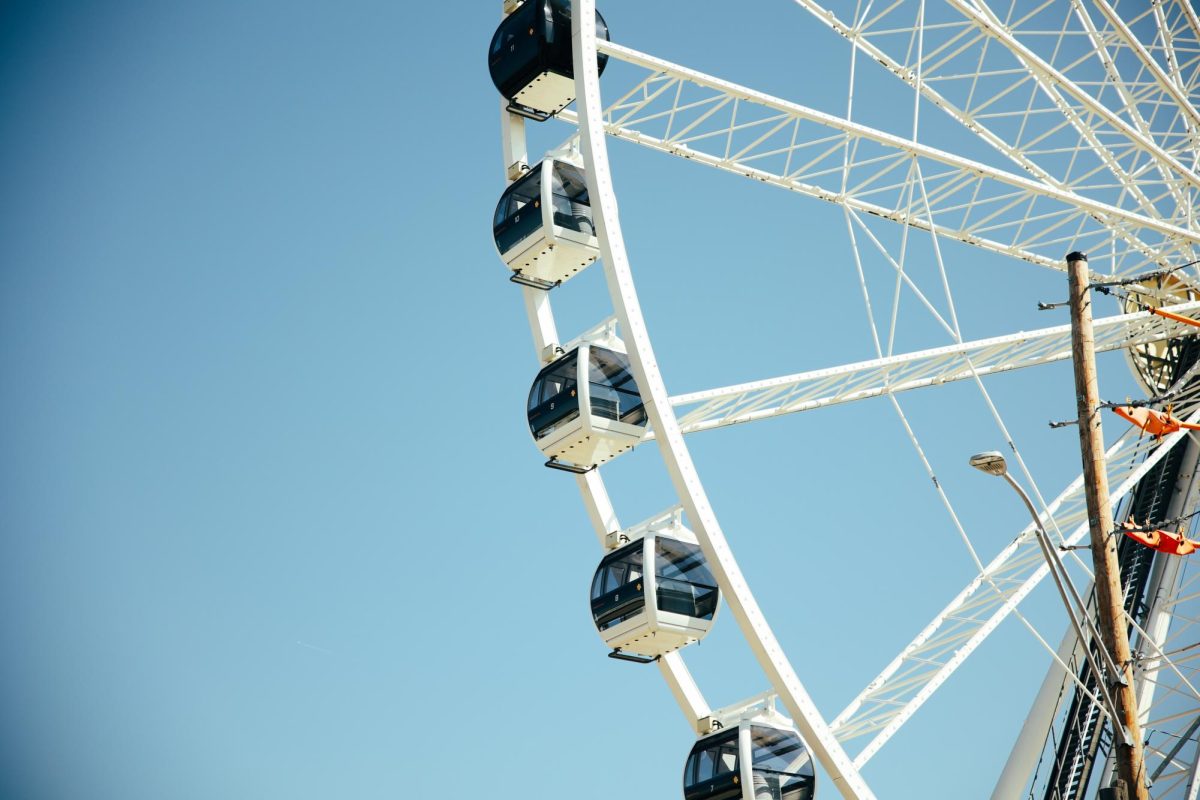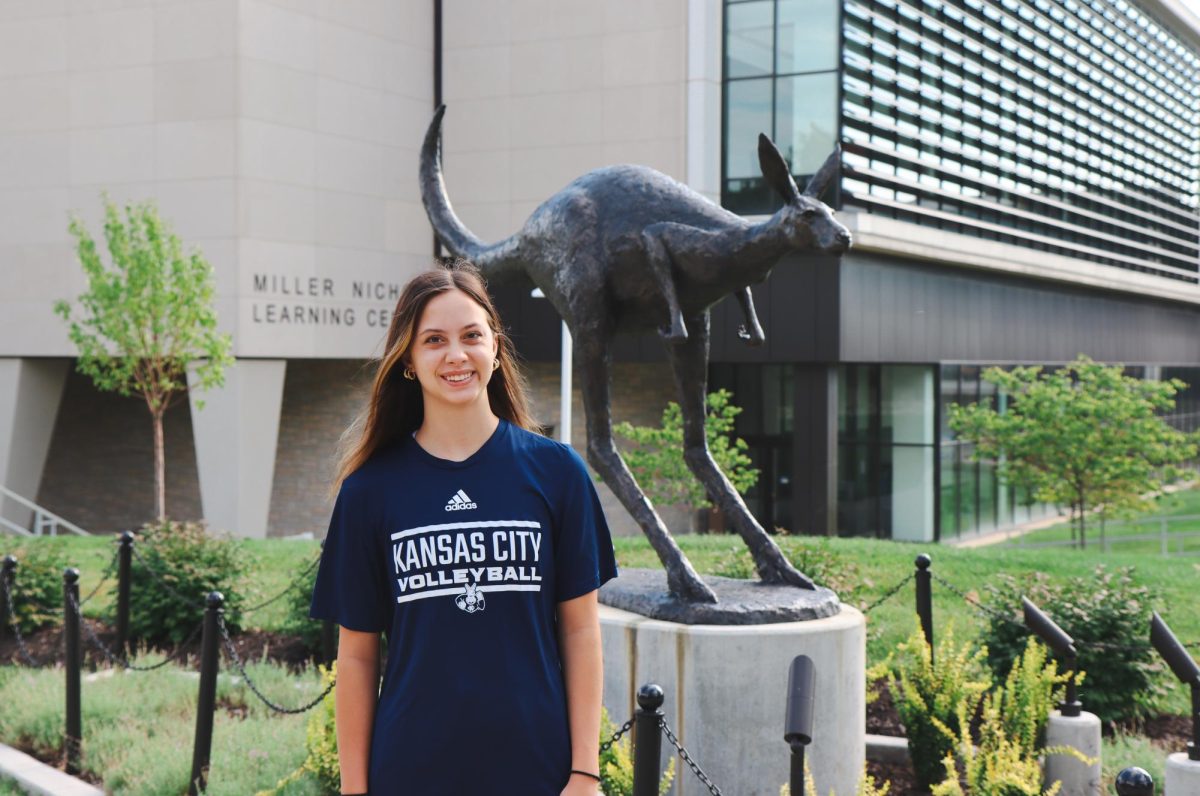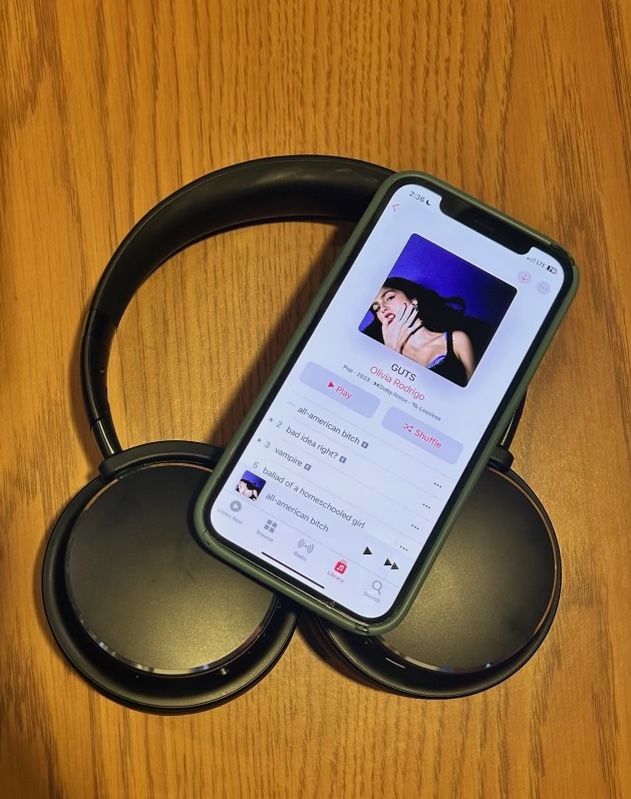On Wednesday, Sept. 23, an emergency action protest began at the Kansas City Police Department Headquarters for Breonna Taylor. News had come that morning indicating her murderer would be charged and punished for the bullets that missed her rather than the ones that hit her. Around a hundred people gathered to protest, forming a crowd significantly smaller than any from protests during the first week of May. Among a shuffling and fairly silent crowd, a cast of news cameras lined the opposite side of the street, watching the backs of those calling for justice. A protestor quietly placed large white poster boards around a memorial erected for the police. The boards contained photos of different Black men murdered by KCPD. There was a separate board for M.R, the Black 15-year-old boy who had his front teeth broken; and B.B. Hill, the Black trans woman who was beaten severely by KCPD officers. The man who displayed the posters reached up and tied a “Black Lives Matter” flag just below the line on the statue that read “Dedicated by the people in honor of…” Another person lit small candles that were swiftly snuffed out by the wind.
The protest carried on in the manner that has come to be expected from those who regularly attend. Some of the community leaders spoke and discussed the need for community care along with defunding and abolition of the police. After the speeches, protestors marched to the Jackson County Detention Center to share support for incarcerated community members. Among chants of “We love you,” and “That ain’t right,” many of the inmates from the windows above began flickering lights in their cells and pounding on windows to let protestors below know they were being heard loud and clear. After only a few minutes, a commotion erupted from the back of the crowd. It was soon discovered that back at KCPD HQ, a protestor who stayed behind to make sure the memorials weren’t vandalized – as they often were by KCPD – had been arrested. The crowd came back and palpable rage and heartbreak filled the air. Calls to right the wrong echoed up to windows and rooftops full of officers laughing and sharing amused remarks among each other, as they peered down from dark rooms with half-drawn blinds. After some time, the crowd discovered which precinct the protester had been taken to, and began to wait and provide what is known as “jail support.”
Upon arriving, information spread that three other protestors had been pulled over, arrested and taken to two different locations, Shoal Creek and Belton. “The police are playing games,” someone said. Another protestor called it “a police game of cat and mouse.” The crowd began migrating again after the first protester was freed, this time in two different groups. The hostility from the police force at Shoal Creek was alarming, considering that we were only waiting in the parking lot for our comrades to be freed. After they were released, the group began its trip to the other location to reform as a whole. I decided to end my night there, thinking it was one of the more antagonizing moves from the police in a while. This was a mistake.
On Saturday Sept. 26, around 2 p.m., a Trump parade began at Liberty Memorial and caravanned to the Plaza. Activists arrived at Mill Creek Park in counter protest. At around 3:30 p.m., two men attacked a pair of women who had passed by and removed a Trump flag from a parader’s car. Protestors called for the police to arrest the assailants, as they put one of the women in a headlock and punched the other. The police did not move to respond or attempt to make any arrest. As a result, two young men, one Black and the other white, began taking action in place of the police, trying to stop the men from further attacking the women by standing between them. One of the paraders threw a punch and a fight broke out. Officers then came to arrest the men who got in the way of the women being attacked – instead of the paraders. The white protester was tackled and walked to a police car as a group of officers gathered around the other man on the ground, one officer pinning him down by placing a knee on his back. Onlookers could be heard yelling for the police to get off of him, but the officers did not remove themselves until the pinned man was handcuffed. Once again I thought that this had been one of the more antagonizing moves from the police in a while. Once again I was mistaken.
Last Wednesday, Sept. 30, a group of KCPD officers arrested a young pregnant Black woman. The officers forced her to the ground where she had to lie on her stomach, her pregnancy ignored. Once again an officer placed a knee on her back while she was on the ground. At the time of writing, the only information released is that the woman was taken to a hospital.
For the past eighteen weeks, thousands of people across the globe have been calling for justice. Not one cry has been heard without being met with violence or a threat to stay silent from government and police alike. In Kansas City alone, we have been met with federal occupation, money donated from the Fraternal Order of Police to the council board, racist remarks made from a white council member to a Black council member, breaks on eviction moratoriums, no removal of Chief Rick Smith, no reallocation of police funding, no productive discussion between city council members and community leaders, and no change in the violence that Black people have been experiencing for 400 years. Three unarmed Black men have been murdered this year alone under Chief Rick Smith’s watch. Donnie Sanders was murdered on March 13, the same day as Breonna Taylor. The name of the officer who killed him has still not been released to the public. One sentiment repeated through these weeks rings clear in my mind: when there is no justice, there will be no peace.
overmanna@mail.umkc.edu


